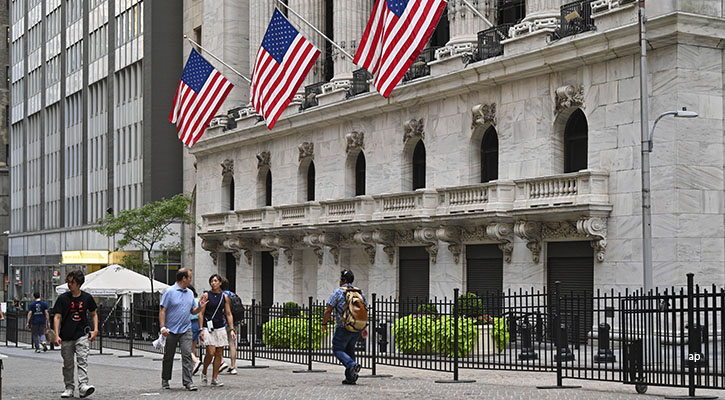For economic and market news relating to Asian ETFs, please refer to our “Asia ETF Roundup (Market) – December 2013 and January 2014”.
ETF Industry News
New Products Coming to Hong Kong – First RQFII Bond ETF
CSOP has announced that they are launching the first RQFII bond ETF in Hong Kong, also the first Chinese onshore bond ETF, namely the CSOP China 5-Year Treasury Bond ETF (Rmb counter 83199; HKD counter 03199), tracking the ChinaBond 5-Year Treasury Bond Index. The index is comprised of Chinese treasury bonds with fixed interest rates and maturity term of 4 to 7 years. As of 17 January 2014, the index consists of 48 constituent bonds with an aggregated value of Rmb 1.3 billion.
We welcome this development as this will bring another choice of asset class to investors through the ETF wrapper.
Mutual Recognition of Funds between Hong Kong and China Reaches “Final Stretch”
In a public speech made by Ms. Alexa Lam, Deputy Chief Executive Officer of the Hong Kong SFC, (please refer to the transcript of his speech here) it was mentioned that the background work on Mutual Recognition of Funds Initiative between Hong Kong and China is at the “final stretch”. The fund industry in Hong Kong and China is generally positive on this development as this could create more business opportunities. Although this development did not explicitly touch on ETFs, we believe the mutual recognition on ETFs in Hong Kong and China, if it materialises, could allow investors in Hong Kong and China to have more ETF choices and form a stronger regional platform for ETF investors.
First ETF Launched in the Philippines
The first ETF came to the Philippines in December 2013, making it the latest market in the region to offer locally-domiciled ETFs for domestic investors. This first ETF on the Philippine Stock Exchange (PSE) is managed by First Metro Asset Management, namely the First Metro Philippine Equity ETF (FMETF). This ETF tracks the PSEi which is which is comprised of the 30 largest companies on the PSE.
RQFII ETFs Paraded into Europe and the US
Subsequent to the launch of the first RQFII ETF in the US in November, namely the db X-trackers Harvest CSI 300 China A-Shares Fund (ASHR, listed in the US), two RQFII ETFs were launched in Europe. Source teamed up with CSOP Asset Management and launched the CSOP Source FTSE China A50 UCITS ETF (CHNA, listed in the UK) while Deutsche Asset and Wealth Management teamed up with Harvest Global Investments and launched the db x-trackers Harvest CSI300 Index UCITS ETF (DR, listed in the UK and on the Deutsche Börse).
In addition, CSOP and Source have filed with the U.S. Securities and Exchange Commission (SEC) to launch an ETF tracking the FTSE China A50 Index.
FTSE China 25 Index Becoming FTSE China 50 Index from 19 September 2014
FTSE has announced it will be expanding the FTSE China 25 Index--which will become FTSE China 50 Index and have 50 constituents. The change will be effective from the close of trading on 19 September 2014. FTSE estimates that the additional 25 companies will account for 19.1% of the FTSE China 50 Index (provisional data by FTSE as of 30 September 2013).
For details on the change, please refer to the FAQ and the ground rules of the FTSE China 50 Index published by FTSE.
There are a number of ETFs around the world tracking the FTSE China 25 Index, namely:
- CIMB FTSE China 25 (0823EA listed in Malaysia)
- db x-trackers FTSE China 25 UCITS ETF (03007, listed in Hong Kong; HD8 listed in Singapore; XX2D listed in the UK and various exchanges in Europe)
- Easy ETF FTSE China 25 EUR (EXC listed in France)
- Hang Seng FTSE China 25 Index ETF (02838 listed in Hong Kong)
- iShares China Large-Cap ETF (FXI, listed in the US, Chile and Mexico; and IZZ listed in Australia)
- iShares China Large Cap UCITS ETF (IDFX listed in the UK and various exchange in Europe)
- iShares China Index (XCH listed in Canada)
There are also a number of leveraged/inverse ETFs listed in the US:
- Direxion Daily FTSE China Bull 3X Shares (YANG)
- Direxion Daily FTSE China Bear 3X Shares (YINN)
- ProShares Short FTSE China 25 (YXI)
- ProShares Ultra FTSE China 25 (YPP)
- ProShares UltraShort FTSE China 25 (FXP)
Of these ETFs, the iShares China Large-Cap ETF (FXI, listed in the US, Chile and Mexico; and IZZ listed in Australia) is the largest by AUM, at US$5.5 billion as of end-January 2014. It is also the second largest by AUM amongst all ETFs tracking a Chinese equities index.
With this upcoming change to the index, we would advise investors to assess the resulting impact to their portfolios, and in particular the resulting changes in sector exposure.
iShares China A-Share ETFs Now Provide for Realised and Unrealised Capital Gains Tax and Change of Underlying Benchmark
Effective from 6 December 2013, the 8 iShares’ China A-Share ETFs (tracking FTSE China A50 Index, CSI 300 Index and 6 CSI 300 sector indices) have begun to make provision for the potential 10% PRC capital gains tax (CGT) on unrealised gains on the China A-Share Access Products (CAAPs) and the CGT on realised gains withheld by the CAAP issuers. In addition, the iShares FTSE A50 China Index ETF (02823) will make provision for both the realized and unrealised gains on its A-Share direct investments. Recall that before this change, the 8 ETFs had not made provisions for such taxes and hence the NAV of the ETFs has been negatively affected from the changes’ effective date.
Investors should note that the potential CGT on realised gains that have not been withheld by the CAAP issuers for these 8 iShares ETFs are still not provided for. As a result, there remains the potential for a negative impact should the ultimate tax ruling turn out to be unfavourable. for instance, based on figures disclosed in the latest annual reports of the iShares FTSE A50 China Index ETF (02823) and iShares CSI 300 A-Share Index ETF (02846), potential CGT on realised gains not yet provided for were estimated at 4.5% and 0.4% of the funds’ respective NAVs as of end-December 2012.
In addition, the 8 iShares’ China A-Share ETFs will change their underlying benchmarks from gross total return to net total return (i.e. net of withholding tax on dividends) aligning to the reality that the ETFs are subject to 10% withholding tax on dividends.
ChinaAMC CSI 300 Index ETF No Longer Provides for Realised and Unrealised Capital Gains Tax Except for Land Rich Companies
On 27 January 2014, the ChinaAMC CSI 300 Index ETF (83188, 03188) announced that it has obtained a Hong Kong Tax Resident Certificate (HKTRC) from the Inland Revenue Department of Hong Kong and the manager considers, along with professional tax advice, that the ETF is able to enjoy certain withholding tax exemption on capital gains under certain tax arrangements between China and Hong Kong.
As a result, effective from 27 January 2014, the ETF would no longer make provisions for withholding tax (10%) on unrealised and realised gains except for those derived from “land rich companies” (PRC companies with more than 50% assets comprised of immovable properties in the PRC). According to the announcement, as of 24 January 2014, the ETF had a total provision of Rmb 155 million of which Rmb 147 million was related to non-land rich companies (1.75% of the NAV of the ETF). As a result of this change in provision policy, the reversal of the provision was made on 27 January 2014. As of 27 January 2014, 43 companies out of the 300 constituent stocks of the index are determined by the manager to be land rich companies.
While the non-provisioning of the withholding tax has pushed up NAV and would reduce tracking error/difference with the index, investors should note that, according to the announcement, the tax relief under the China-HK arrangement is still subject to final approval of the PRC tax authorities. Hence, uncertainty remains pending further clarification by the Chinese tax authorities, in our view. We believe that other RQFII ETFs are likely to follow this practice.
As we discussed before, there are both pros and cons when it comes to provisioning and non-provisioning for the potential withholding tax. The uncertainty and complication on this tax issue will persist until the Chinese tax authorities set out clear rules regarding this tax. In our view, for the best benefit of investors, we prefer ETFs that set out clear provision policies and, in a timely manner, disclose the potential tax amount for investors to assess the impact.
RQFII ETF Watch – 11th RQFII ETF Listed; Another 2 Months of Large Net Inflows
- The 11th RQFII ETF, Bosera FTSE China A50 Index ETF (RMB counter 82832, HKD counter 02832) was listed on 2 December 2013 on the Stock Exchange of Hong Kong. This is the second RQFII ETF tracking the FTSE China A50 Index. The ETF levies an estimated TER of 1.19%, putting it at the top of the range (0.85% - 1.15%) amongst the RQFII ETFs. Meanwhile, the manager of the ETF announced to waive the management fee (0.99% p.a.) chargeable to the ETF for the period from 6 December 2013 to 5 January 2014.
- The application by ChinaAMC CSI 300 Index ETF (83188, 03188), Harvest MSCI China A Index ETF (83118, 03118) and E Fund CSI 100 A-Share Index ETF (83100, 03100) to reduce their RQFII quota was approved by the Chinese regulators in December 2013, their quota are now at Rmb 14 billion, Rmb 3 billion and Rmb 3 billion respectively. Meanwhile in January 2014, Harvest MSCI China A Index ETF (83118, 03118) and E Fund CSI 100 A-Share Index ETF (83100, 03100) further applied for quota to be reduced from Rmb 3 billion to Rmb 2 billion.
- On 24 December 2013, Bosera FTSE China A50 Index ETF (82832, 02832) was granted with additional RQFII quota, putting total quota available at Rmb 4 billion.
- On 27 December 2013, CSOP FTSE China A50 ETF (82822, 02822) was granted with additional RQFII quota, putting total quota available at Rmb 22.5 billion. On 13 January 2013, CSOP FTSE China A50 ETF (82822, 02822) announced that it had applied for an increase of its RQFII quota.
- In December 2013 and January 2014, RQFII ETFs continued to see aggregate net inflows, amounting to Rmb 2.1 billion and Rmb 2.5 billion, respectively (each at around 6% of beginning and ending AUM), compared to Rmb 2.8 billion in November 2013. Amongst the RQFII ETFs, the CSOP FTSE China A50 ETF (82822 & 02822) recorded the largest net inflow in the two months, totaling around Rmb 4 billion.
- For the full year 2013, we estimate that there were net outflows of Rmb 7.7 billion in total from the 11 RQFII ETFs (excluding the net inflows, or seed capital, into the newly listed ETFs on their first day of trading).
- The largest A-Share ETF by AUM in Hong Kong, iShares FTSE A50 China Index ETF (02823), also recorded net inflows in the past two months, estimated at Rmb 634 million in December and Rmb 3 billion in January, compared to Rmb 897 million of net inflows in November. For the full year 2013, we estimate net inflows into the ETF at Rmb 1.6 billion.
.png)
.png)
New Launches and Listings
First ETF in the Philippines
On 2 December 2013, First Metro Asset Management listed the country’s first ETF on the Philippine Stock Exchange (PSE), namely the First Metro Philippine Equity ETF (FMETF). This ETF tracks the PSEi which is which is comprised of the 30 largest companies on the PSE. At end of the first day of trading, the net asset value of the ETF stood at 745 million Philippine Peso.
Wanjia Lists an ETF in China
On 2 December 2013, Wanjia Asset listed at ETF on the Shanghai Stock Exchange. This ETF tracks the SSE 380 index which consists of the 380 mid cap stocks, with high growth and good earning records--aiming to reflect the performance of the Shanghai new blue chip stocks. This is the first ETF managed by Wanjia Asset.
Bosera Lists a RQFII ETF in Hong Kong
On 9 December 2013, Bosera listed a RQFII ETF on the Stock Exchange of Hong Kong, namely the Bosera FTSE China A50 Index ETF (RMB counter 82832, HKD counter 02832). This is the 11th RQFII ETF listed in Hong Kong and puts the total number of ETFs listed in Hong Kong at 116.
Hanwha Lists 1 Synthetic ETF and 2 Bond ETFs in Korea
On 10 December 2013, Hanwha Investment listed a synthetic ETF on the Korea Exchange tracking the MSCI AC World Index. This is the 5th synthetic ETF listed on the Korea Exchange. In addition, on 19 December 2013, Hanwha listed two bond ETFs on the Korea Exchange, tracking the KAP Money Market Index (Total Return) and KAP Barbell Index (Total Return) respectively.
E Fund Lists a Gold ETF in China
On 16 December 2013, E Fund listed the country’s third Gold ETF on the Shenzhen Stock Exchange, namely the E Fund Gold ETF (159934). The ETF tracks the Au99.99 Spot Gold Contract prices on the Shanghai Gold Exchange.
Korea Investment Lists a Money Market ETF in Korea
On 23 December 2013, Korea Investment listed a money market fund on the Korea Exchange tracking the KIS MSB Short-term Index (Total Return).
This ETF and the three Hanwha ETFs put the total number of ETFs listed in Korea at 146.
HuaAn Lists 2 Sector ETFs in China
On 6 January 2014, HuaAn Funds listed two sector ETFs on the Shanghai Stock Exchange. The ETFs track the CSI Real Estate Sub-industry Index and the CSI Health Care Sub-industry Index. The indices comprise the largest 50 stocks in the respective sectors after taking out the lowest 20% stocks in turnover.
Bosera Lists a Cross Border ETF in China
On 15 January 2014, Bosera Funds listed the country’s second cross border ETF on the Shanghai Stock Exchange, namely the Bosera S&P 500 ETF (513500), tracking the S&P 500 Index. The first cross border ETF was listed in May 2013, namely the Quotai Nasdaq 100 ETF (513100).
Invesco Great Wall Lists an ETF in China
On 21 January 2014, Invesco Great Wall listed an ETF on the Shenzhen Stock Exchange, namely the Invesco Great Wall CSI 500 Index ETF (159935). The ETF tracks the CSI 500 Index which aims to reflect the price performance of small-cap equities listed on the Shanghai and Shenzhen stock exchanges.
Together with the other ETFs newly listed in China in the past two months, the total number of ETFs listed in China stands at 82.
List of ETFs Launched in December 2013 and January 2014
.png)

















